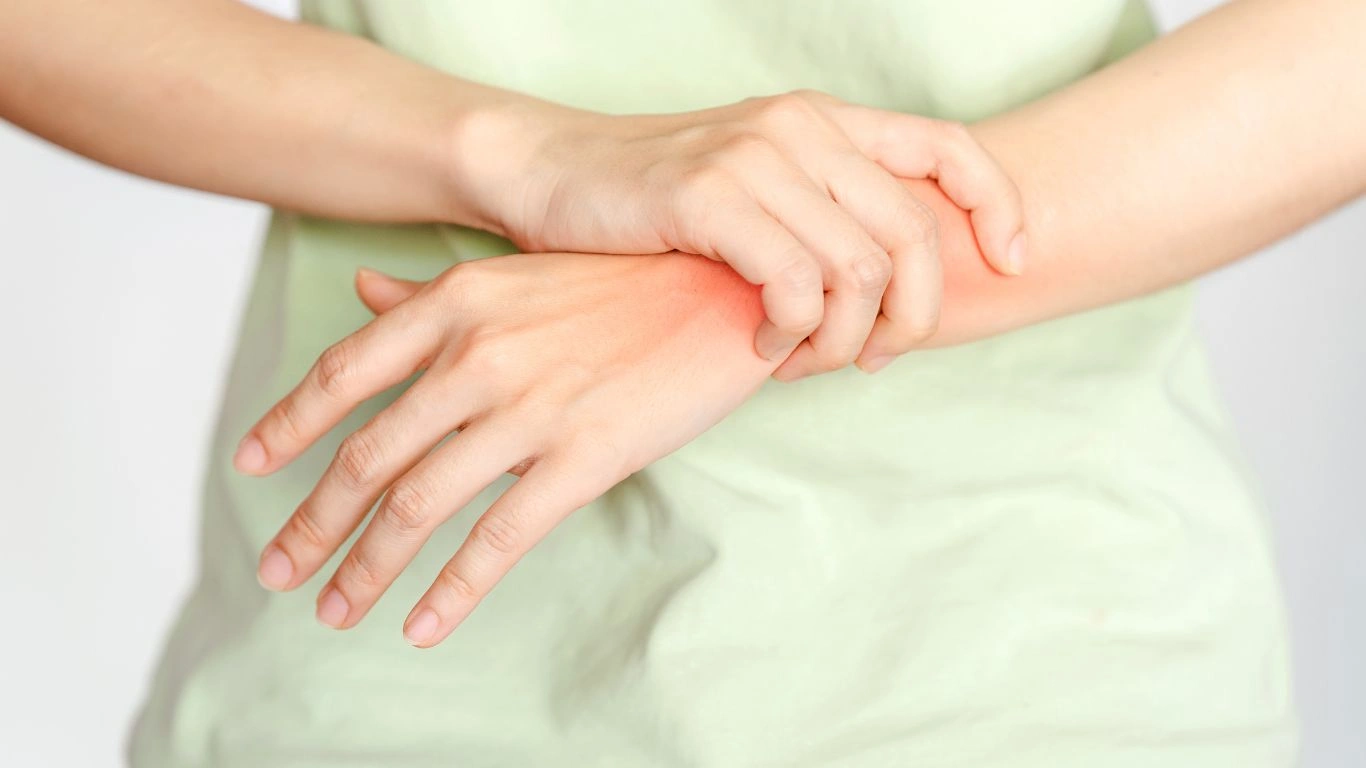How to Protect Your Joints from Rheumatoid Arthritis Damage: Tips and Strategies from a Pro
Hey there! If you’re reading this, chances are you or someone you know is dealing with rheumatoid arthritis (RA). Whether you’ve just been diagnosed or you’ve been living with it for years, you’re probably wondering how to protect your joints from rheumatoid arthritis damage. Trust me, I totally get it – as someone who’s spent years helping people with RA, I’ve seen firsthand how this condition can affect your day-to-day life. But don’t worry! There are plenty of ways to protect your joints and manage the disease effectively, and I’m here to share them with you.
So, let’s take a relaxed, real-world approach to managing RA. No need for complicated medical jargon – just simple, practical advice from someone who’s worked with many patients facing the same challenges you might be. Let’s dive in!
What Exactly is Rheumatoid Arthritis?

Before we get into the nitty-gritty of joint protection, let’s break down what RA really is. RA is a chronic autoimmune disease, which means your body’s immune system – the part that’s supposed to fight off bad stuff like bacteria – gets confused and starts attacking your own healthy tissues. This leads to inflammation in the joints, causing pain, swelling, and eventually, joint damage if left unchecked.
Unlike osteoarthritis (which happens when your cartilage wears down over time), rheumatoid arthritis happens because of this autoimmune reaction, and it can affect joints on both sides of your body. So, it’s not just a little stiffness here and there – RA can really take a toll on your joints if it’s not managed.
Why Should You Care About Protecting Your Joints?

This is a no-brainer, right? The more damage RA causes to your joints, the harder it gets to move around comfortably. You don’t want to end up with painful joints that are deformed or stiff beyond repair.
Protecting your joints is all about slowing down the damage, reducing inflammation, and maintaining the function of your joints so that you can live your life without RA constantly holding you back. And let’s be real, no one wants to give up their favorite activities or even simple everyday tasks because of joint pain. So, let’s figure out how we can keep your joints in the best shape possible, together!
How to Protect Your Joints from Rheumatoid Arthritis Damage: Key Strategies

1. Get an Early Diagnosis and Start Treatment ASAP
Okay, I’ll say it: the earlier you catch RA, the better. I’ve seen so many patients who’ve started treatment early and had much better results. If you’re dealing with any symptoms like joint pain, swelling, or stiffness that lasts for more than a few weeks, don’t wait around. Head to your doctor and get a proper diagnosis.
When I was first working with a patient named Sarah (who had just been diagnosed), she was skeptical about starting medication. But once we got her on a combination of DMARDs (disease-modifying antirheumatic drugs) and biologics, the improvement was incredible. By reducing inflammation early, we were able to protect her joints and prevent irreversible damage.
2. Exercise, but Don’t Overdo It!
I know – exercise and RA might sound like an odd combo. But hear me out. Gentle, low-impact exercise is essential for maintaining flexibility and keeping the joints moving. Swimming, walking, yoga, and biking are all great choices.
I remember working with a patient, Tim, who had a love for cycling but was worried it would make his joints worse. We started him off slow, incorporating stretches before and after rides, and gradually building strength. Now, he’s not just keeping his joints healthy, but he’s also enjoying his favorite hobby without pain!
Pro Tip: Avoid high-impact activities like running or jumping, which can strain your joints more.
3. Joint Protection Techniques: Little Tweaks Make a Big Difference
This might sound basic, but using proper techniques for doing everyday tasks can make a world of difference in preventing joint strain. Things like:
- Using ergonomic tools: Simple stuff like a cushion for your chair or using a reacher to grab things from high shelves can protect your joints from extra strain.
- Changing how you sit or stand: Having a chair that supports your posture is crucial. I’ve worked with several patients who felt so much relief just from learning how to sit with their legs positioned better.
Also, using assistive devices like joint supports, splints, or canes when necessary can help keep the pressure off your joints. And don’t worry – these things don’t make you look “old” or “weak.” Think of them as smart ways to protect your body!
Your Diet: Feed Your Joints Right

I know, I know – diets can feel like a headache to think about, but trust me, the right foods can actually help reduce inflammation and support joint health. Omega-3 fatty acids (found in fish like salmon or flaxseeds) are especially good for RA patients, as they have natural anti-inflammatory properties.
A great example is my patient, Claire, who noticed that cutting out processed foods like fast food and focusing more on whole foods really helped her inflammation levels. She switched to a Mediterranean-style diet, rich in fruits, veggies, nuts, and fish – and within a couple of months, she felt noticeably better.
Don’t forget about hydration either! Drinking water is super important to keep your body running smoothly.
Stress Management: Relax, It’s Part of the Plan!
I’m not going to sugarcoat it: stress can make RA worse. I’ve seen it happen time and time again – people with RA who are juggling stressors at home or work see their symptoms flare up. The stress hormone cortisol can actually increase inflammation, so it’s important to find ways to keep your stress in check.
One of my patients, Jane, used to get super stressed out about her job. She started incorporating mindfulness and meditation into her routine, and she found it made a big difference in how her joints felt. Even just deep-breathing exercises can help calm the mind and ease tension in your body.
Try finding something that works for you – whether it’s yoga, meditation, journaling, or even a relaxing hobby. Your joints will thank you!
Troubleshooting Common Issues: What to Do When Things Aren’t Going Right
RA can be tricky to manage, and sometimes you’ll hit a bump in the road. Whether it’s a sudden flare-up or medication side effects, let’s troubleshoot together.
- Flare-Ups: If your joints are suddenly more swollen or painful, a flare-up might be happening. Don’t panic. Contact your doctor right away to adjust your treatment plan. A flare-up can usually be controlled with medication, rest, and adjusting your daily routine.
- Joint Deformities: It’s tough, but some people might experience permanent joint damage if RA is left untreated. But don’t worry! Early intervention can prevent this. And if you’ve already experienced deformities, there are surgical options available to improve mobility.
Real-Life Success Stories: These Patients Are Crushing RA
– Meet Sarah: Sarah was diagnosed with RA at age 40. She was in constant pain, and even basic tasks like opening a jar felt impossible. But with a mix of medications, regular physical therapy, and joint protection strategies, she was able to get back to her active lifestyle. Now, Sarah is hiking, cooking, and even playing tennis again!
– Meet Tim: Tim’s been living with RA for years. His breakthrough came when he started working with a physical therapist who taught him proper joint techniques. By using these methods, his pain is more manageable, and he’s back to enjoying his cycling hobby.
Key Takeaways: Your Plan to Protect Your Joints
Here’s the bottom line: protecting your joints from rheumatoid arthritis damage starts with early diagnosis, the right treatment plan, and a few lifestyle changes. By incorporating exercise, a healthy diet, joint protection strategies, and stress management into your routine, you can prevent further damage and improve your quality of life.
5 FAQs: Let’s Get Some Clarity
- Can RA be cured? Unfortunately, there’s no cure for RA, but with the right treatment plan, you can manage symptoms and protect your joints from damage.
- What’s the best exercise for RA? Low-impact activities like swimming, yoga, and walking are great for maintaining joint health.
- How can I reduce inflammation naturally? A healthy diet rich in omega-3s, antioxidants, and anti-inflammatory foods can help reduce RA inflammation.
- Is it okay to take over-the-counter pain medication for RA? While OTC medications like ibuprofen can help with pain, it’s important to consult your doctor for long-term management.
- Should I avoid certain foods with RA? Yes, avoiding processed foods, sugar, and high-fat foods can help reduce inflammation.
Appendix
References:
- American College of Rheumatology: rheumatology.org
- National Institute of Arthritis and Musculoskeletal and Skin Diseases: niams.nih.gov
Disclaimer: This article is for informational purposes only and does not replace professional medical advice. Always consult with your healthcare provider before making changes to your treatment plan.
Call to Action: Ready to take control of your rheumatoid arthritis? Schedule an appointment with a rheumatologist today, and let’s work together to protect your joints and improve your quality of life!

Tarra Nugroho is a dedicated Nurse Practitioner with a strong foundation in family and preventive care. She brings both compassion and clinical expertise to her practice, focusing on patient-centered care and health education. As a contributor to Healthusias.com, Tarra translates medical knowledge into clear, empowering articles on topics like women’s health, chronic disease management, and lifestyle medicine. Her mission is simple: help people feel seen, heard, and informed—both in the clinic and through the content she creates. When she’s not caring for patients, Tarra enjoys weekend hikes, plant-based cooking, and curling up with a good health podcast.






